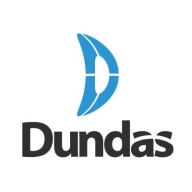

Dundas Dashboard and Google Cloud Datalab are analytics solutions competing in data handling and visualization. Dundas Dashboard appears to have an upper hand in customization and visualization, while Google Cloud Datalab leads in integration and data processing.
Features: Dundas Dashboard offers customizable UI with features like interactive sorting, dynamic grouping, and excellent charting controls. It connects seamlessly to various data sources and allows for advanced scripting capabilities with C#. Google Cloud Datalab features robust infrastructure and seamless development environment setup, focusing on Python libraries. Its integration with Google Cloud enhances data pipeline design and efficient resource utilization.
Room for Improvement: Dundas Dashboard could enhance mobile compatibility, ease of use for non-technical users, and reduce initial setup time. Google Cloud Datalab might improve its AI configuration limits, streamline node management, and offer better support for smaller datasets.
Ease of Deployment and Customer Service: Dundas Dashboard supports both on-premise and cloud deployment, offering flexible options and strong customer support. Google Cloud Datalab focuses on cloud deployment and benefits from Google's infrastructure, though setup can be complex.
Pricing and ROI: Dundas Dashboard entails a higher upfront cost but promises significant ROI with its tailored analytics solutions. Google Cloud Datalab provides cost-effective pricing and scalability, offering potential high ROI in data-centric environments.

Dashboards provide a central location for users to access, interact and analyze up-to-date information so they can make smarter, data-driven decisions. Good dashboard software enables you to monitor and measure performance and metrics in real-time and on the go. You can visualize and analyze data and focus on Key Performance Indicators (KPIs) from across the organization on a dashboard, helping you gain valuable insight and drive quick and accurate decision making.
Cloud Datalab is a powerful interactive tool created to explore, analyze, transform and visualize data and build machine learning models on Google Cloud Platform. It runs on Google Compute Engine and connects to multiple cloud services easily so you can focus on your data science tasks.
We monitor all Data Visualization reviews to prevent fraudulent reviews and keep review quality high. We do not post reviews by company employees or direct competitors. We validate each review for authenticity via cross-reference with LinkedIn, and personal follow-up with the reviewer when necessary.